Watching your adorable Rottweiler pup grow from a tiny ball of fluff into a muscular, full-sized companion is a fantastic journey.
But when do those gangly legs and oversized paws finally stop expanding? Identifying when your pup reaches full adult size can help you better care for their health and nutrition.
An Overview of Rottweiler Growth
Rottweilers are a large working dog breed that reaches physical maturity between 1-3 years old.
During the first year, you’ll see the most rapid growth as your puppy gains height and length in their legs, body and head.
They’ll continue to fill out with muscle mass and bulk well into the second or third year.
Knowing when your Rottweiler has finished growing can help you:
- Monitor their growth and ensure it’s on track
- Identify potential health issues impairing growth
- Switch over to adult dog food at the right time
- Alter any puppy exercise restrictions once they are fully grown
- Better predict their full adult size and weight
Rottweiler growth is gradual overall, but tracking key milestones will help pinpoint when those adorable oversized paws and legs finally stop expanding!
When Do Rottweilers Stop Growing Up?
When a Rottweiler rapidly gains height, the upward growth phase typically ends between 12-18 months old.
However, their growth plates don’t fuse completely until around 12 months, so you may see slight upward gains until about one year old.
Here’s a guide to the vital age markers:
- 3-6 months: The peak puppy growth phase. They can gain up to 10 pounds or more monthly during this stage. Paws, legs, snout, and ears look bigger than body size.
- 6–8 months: The upward growth rate starts slowing. They may gain 5-8 pounds or so each month.
- 9–12 months: Growth plates start fusing and closing. The upward growth is steadily tapering off. Monthly gains drop to 2–3 pounds.
- 12–18 months: Most Rottweilers will have reached their full adult height by 12 months, give or take a couple of inches. Leg bones like the tibia and femur have stopped noticeably extending. Just some subtle muscular maturation continues. Monthly gains are very minimal after 12 months.
- Eighteen months to 2 years: Any residual upward growth is usually complete by 18 months old. The wiry, lanky adolescent look is gone, leaving a visibly mature dog in height.
So, in summary, monitor your Rottweiler’s increase in height each month from 6 months onward. Their upward growth is nearly over once those monthly gains start slowing down. By 12-18 months, they’ll reach their full adult stature.
When Do Rottweilers Stop Filling Out?
While Rottweilers stop growing upwards at around a year old, they continue filling out and gaining muscle mass up to 2-3 years old.
Some key timeframes:
- 12–18 months: Males begin noticeably bulking up in the neck, chest, and hindquarters. Females start to fill out slightly sooner than males.
- Eighteen months to 2 years: Continued muscle development makes them look more masculine (males) or feminine (females). Jaws, necks, and leg muscles become more defined.
- 2-3 years: Males achieve peak muscle mass and bulk between 2-3 years old. Females reach their optimal adult weight at around two years old.
So, while your Rottweiler may stop getting taller quite early, their physical maturation isn’t complete until 2–3 years old regarding muscle development and weight gain. Their broad chest, muscular hindquarters, and thick neck don’t fully develop until sexual maturity, from 2 years onward.
Signs Your Rottweiler Has Finished Growing Upward
How can you identify when your adorable Rottweiler pup has stopped gaining height? Here are some telltale signs:
Their Growth Rate plateau
- Please pay close attention to their rate of height gain each month from around six months old onward.
- When their upward growth starts slowing down between 6-10 months, they’re likely nearing their final height.
- Expect the rate to decline steadily from 6 months until growth plateaus completely around 12–18 months.
Their Bones Stop Extending
- The long bones in the legs, like the femur and tibia, will stop visibly extending and elongating closer to 12 months of age.
- Their paws will start looking proportionate to the legs rather than oversized.
- Standing side-on, their back and legs will take on a balanced, square look as growth slows.
They Reach Adult Height
- Monitor their height monthly with a measuring stick from around 9–12 months onward.
- Once their height remains steady for 2–3 consecutive months with minimal change, they’ve likely maxed out their growth potential.
- Expect males to reach 25–27 inches and females 23–25 inches at the shoulder.
Growth Plates Fuse
- The growth plates in the long bones usually fuse anywhere between 10-14 months of age.
- X-rays confirm when growth plates have been sealed and completely ossified (turned to bone).
- Once fused, no further upward growth is possible.
So keep measuring their monthly height and note when their growth curve starts flattening. This steady tapering, combined with fused bones, means your puppy’s lanky legs have stopped getting longer.
Signs Your Rottweiler Has Finished Filling Out
While growth in height concludes around 12–18 months, Rottweilers continue to fill out and gain muscle mass until 2–3 years old.
Here are some signs that your adolescent Rottweiler has completed their physical development:
Muscles Visibly Develop
- Look for increased muscle mass and definition, especially around the neck, chest, and hindquarters.
- As they mature, a thickening neck and bulkier chest muscles develop in both sexes.
- The hindquarters and thighs become more muscular and less angular or lanky.
Head and Features Take Shape
- The head takes on a broader, more masculine (males) or refined, feminine (females) shape as cartilage and bone structure mature.
- Jowls fill out, and the underjaw appears more pronounced in males.
- Feminine, delicate features become more prominent in females around two years old.
Weight Gain Tapers Off
- Monthly weight gain gradually decreases from around 18-24 months as muscle growth plateaus.
- Expect a prolonged rate of weight gain after their second birthday when they are physically mature.
Reproductive Maturity
- Sexual maturity from 2 years onwards results in testicular enlargement and sperm production in males.
- The onset of heat cycles in females marks reproductive maturity at two years old.
Fill Out Lasts to 2-3 Years
- Males take up to 2.5–3 years to fill out and bulk up through muscle maturation.
- Females reach their peak weight a few months earlier, at around two years old.
So the bulkier head, chest and muscles, tapered weight gain and reproductive development are all signs your Rottweiler has completed the filling out process. Their mature muscular physique should be evident between 2-3 years of age.
Factors That Impact Growth Rate
Many factors can affect the rate at which an individual Rottweiler grows and matures. These include:
Nutrition
- A high-quality diet with optimal protein and calories will fuel healthy bone and muscle growth.
- Puppies especially need controlled calorie intake to avoid excess weight gain.
- Adolescents need food tailored for large, active breeds.
Exercise
- Gentle exercise stimulates muscle growth and strength development.
- Over-exercising a growing puppy can stress joints and bones.
- Excessive exercise may divert energy from growth to activity.
Genetics
- Some bloodlines mature earlier or produce larger/smaller dogs than the breed standard.
- German-bred Rottweilers tend to run large. American lines have more variance.
Gender
- Males generally grow taller and bulk up more substantially than females.
- Testosterone drives increased bone, muscle and weight gain in adolescent males.
Health
- Illness, disease, or orthopedic injuries can delay or impair average growth.
- Parasites, malnutrition, or obesity also affect growth.
Spay/Neuter
- Altering a dog too early may slightly limit bone growth and muscle mass.
- Delaying neuter until maturity allows more natural growth in males.
So, to optimize healthy maturation, ensure your Rottweiler puppy receives appropriate nutrition, exercise, and veterinary care. Their adult size and physique will depend on both genetics and environmental factors.
Monitoring Your Rottweiler’s Growth
To keep track of your Rottweiler’s development, try these tips:
Weigh Them Monthly
- Weigh puppies at least monthly from 8 weeks to 18 months old.
- Track their monthly weight gain in pounds. Rapid early growth will steadily slow.
- Use a consistent scale and weigh at the same time of day.
Measure Height and Length
- Measure their height from paws to shoulder and length from chest to rump each month.
- The gain in inches should taper off around 12–18 months as they finish growing upward.
Chest Girth
- Take a chest girth measurement around the widest part of the chest.
- Gradually increasing girth shows filling out progress until 2–3 years old.
Photo Comparisons
- Take photos every 1-2 months from both sides and the front.
- Compare to see skeletal growth slowing and muscle development over time.
Record Key Events
- Note teething, behavioral, and coat changes indicative of maturity.
- Track any significant health events that could impact growth.
Monitor Reproduction
- In males, check testicular size and descent from 6 months onwards.
- For females, log the first heat cycle around 1-2 years old.
With regular measurements and photo documentation, you’ll quickly spot when growth rates start changing as your puppy transforms into an adult dog.
Is My Rottweiler Under or Overweight?
Ensuring your Rottweiler maintains a healthy weight throughout their rapid growth phase is essential. Carrying excess fat can stress developing joints and bones. However, inadequate calories will also shorten their genetic growth potential.
Use these tips to check whether your puppy or adolescent Rottweiler is under or overweight:
- Using a visual chart, assess their body condition score on a 1–9 scale. Scores of 4-5/9 are ideal.
- Can you quickly feel (but not see) their ribs without excess fat covering them? Some tucking at the waist is regular.
- Is their belly tucked up or sagging down? A noticeable abdominal tuck or swayback can indicate being underweight.
- Compare their size, bone density, and muscularity to the breed standard at their age.
- Ask your vet to confirm if their height, weight, and condition appear appropriate at each checkup.
Adjust food portions or nutrition density if your Rottweiler pup is trending over or under the ideal weight for their age and structure. Keeping them in peak physical condition will support healthy bones and muscles.
When to Switch to Adult Food
Rottweiler puppies should transition from puppy to adult dog food at around 12 months old. Look for an all-life-stages or adult large-breed formula.
Essential tips on switching:
- Gradually transition over 2-3 weeks by mixing increasing amounts of new food with the old.
- Select a large breed or all-life-stages food with controlled calories. Avoid quick weight gain.
- Check the calcium, phosphorus and vitamin D levels are suitable for a large breed adolescent.
- Pick an adult food formulated for a Rottweiler’s size, activity level, and sensitivities, if any.
- Consult your vet on your puppy’s ideal timing and nutritional needs.
At around a year old, your Rottweiler puppy will need an adult maintenance diet to provide the proper nutrition as they finish growing and filling out. An all-life-stage or giant breed adult food meets these needs.
Frequently Asked Questions
Here are some common questions owners have about Rottweiler growth and maturity:
At What Age is a Rottweiler Fully Grown?
Rottweilers reach full adult size between 12-36 months. They grow upward around 12–18 months after their long bones fuse. But they continue filling out with muscle until they are 2–3 years old. Males are especially mature and bulk up until at least 2.5 years old.
How Big Do Male Rottweilers Get?
According to the breed standard, males average 24-27 inches tall at the shoulder and 110–135 pounds at a healthy adult weight. Some may reach 150 pounds or more if they are very large-boned. Males grow taller and bulk up more than females.
How Big Do Female Rottweilers Get?
Females are smaller, averaging 22–25 inches tall and 80–100 pounds when fully grown. Some females may reach 110 pounds, depending on their bone structure and muscle mass. Females fill out sooner than males, around age 2.
How Can I Monitor My Rottweiler Puppy’s Growth?
Monitor height, weight, length, and chest circumference monthly. Track growth rates over time. Take photos from the front and side every 1-2 months for comparisons. Record any health issues. Note the reproductive maturity signs. Have your vet assess their development at checkups.
Why Has My Rottweiler Stopped Growing Upwards?
Rottweilers usually reach their full adult height around 12–18 months old once the growth plates in their legs fuse and close. Upward growth stops when these bony plates ossify and can no longer extend the leg bones. Monitoring growth monthly helps confirm when this happens.
Is It Normal for Rottweilers to Fill Out Until Age 2-3?
It’s normal and desirable for Rottweilers to continue developing muscle mass and maturing until 2–3 years old. Males bulk up between 18 months and three years as testosterone drives muscle growth. Letting them reach physical maturity results in a more muscular, healthier adult physique.
How Much Should a Rottweiler Weigh?
The ideal weight depends on their age, sex, and structure. Males 24-27″ tall often weigh 110–135 lbs as adults. Females 22–25″ tall weigh around 80–100 lbs on average. Monitor body condition score instead of relying on weight alone.
My Rottweiler Seems Small or large—should I Worry?
Some natural size variance is expected. However, a significant deviation from the breed standard may indicate a health problem. Check with your vet to rule out orthopedic disease, thyroid problems, or malnutrition. Certain lines tend to run large or small as well.
What Causes Growth Issues in Rottweilers?
Injuries, severe malnourishment, illness, and disease can impair average growth. An underlying congenital disorder like dwarfism, thyroid dysfunction, or orthopedic problems may also be a factor. Have your vet examine any puppy showing very abnormal growth patterns.
When Should I Switch to Adult Food?
Consult your vet, but most Rottweiler owners transition off puppy food around 12 months old. Choose a premium adult large breed or all-life-stages formula to safely support their final growth phase.
How Can I Ensure Healthy Growth?
Feed a high-quality diet tailored for large breed puppies, adolescents, and adults during each stage. Avoid overfeeding and excess weight gain. Provide age-appropriate exercise. Schedule regular vet checkups to monitor development. Address any health issues promptly.
The Takeaway on Rottweiler Growth
Tracking your Rottweiler’s changes from puppyhood into adulthood is exciting. Their rapid puppy growth lasts around 6–18 months as they gain height. Then, they fill out with muscle mass until they mature at 2-3 years old.
Measure their progress monthly. Monitor when growth plateaus to identify their final height around 12–18 months. Note muscular development continuing into the second or third year. Keeping them at a healthy weight and addressing any health issues will ensure they reach their genetic potential.
Soon enough, your cute Rottweiler puppy will transform into a gorgeous, muscular adult companion, even if those oversized paws sometimes make them look uncoordinated! With patience and proper care through each life stage, you’ll have the pleasure of watching your “teenage” fur baby grow into an elegant, confident adult dog inside and out.
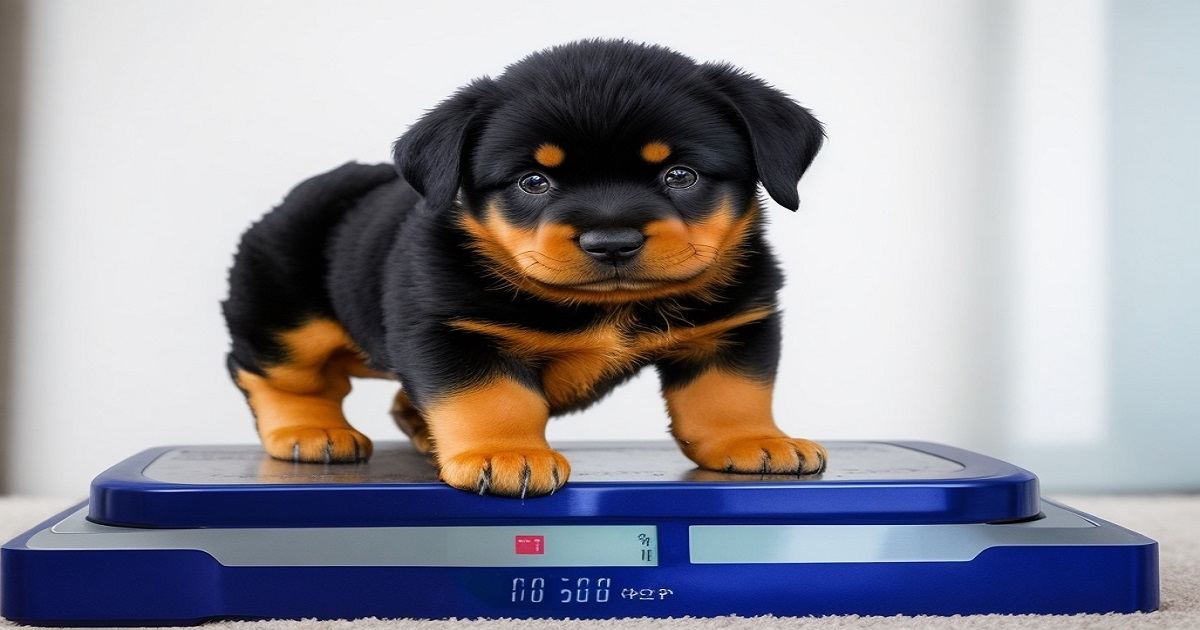
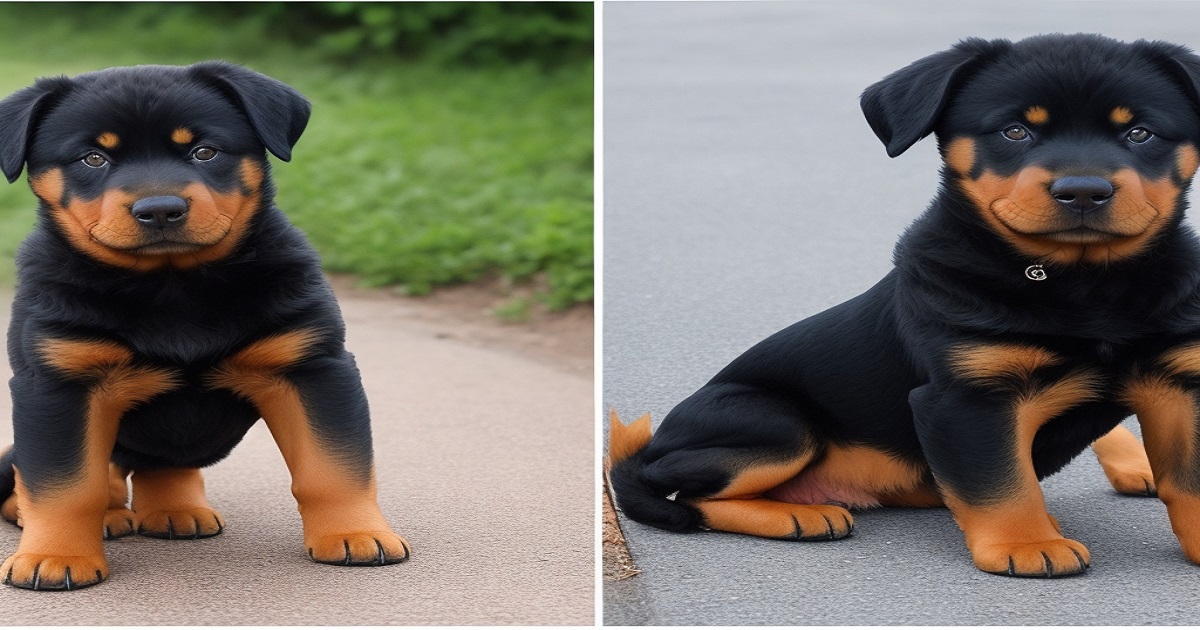

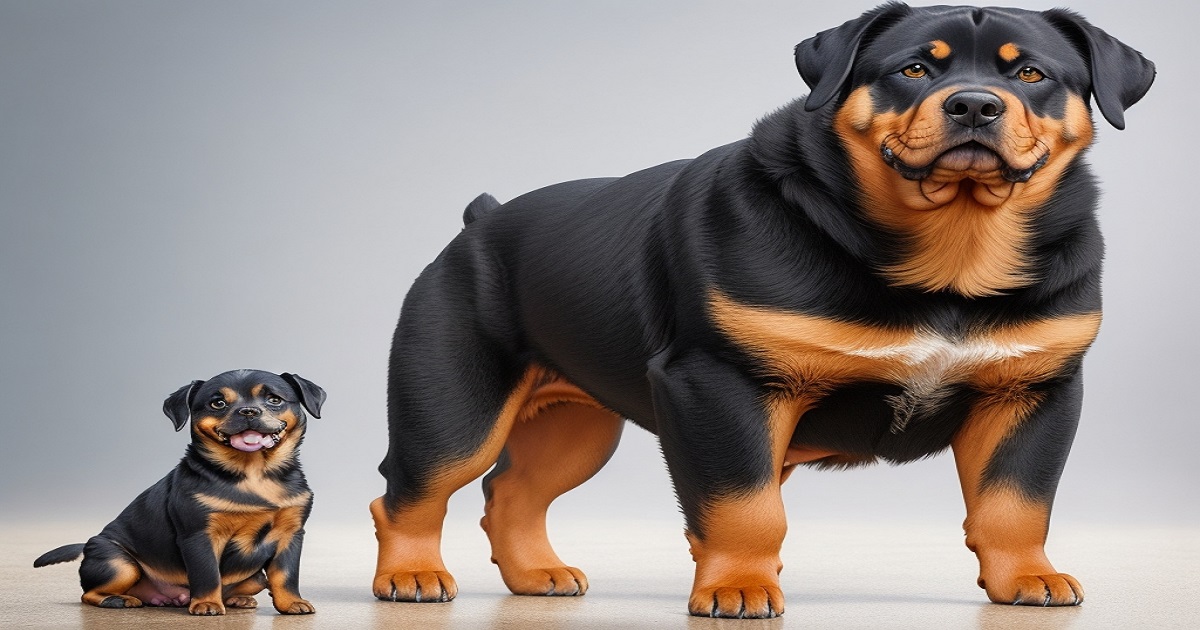
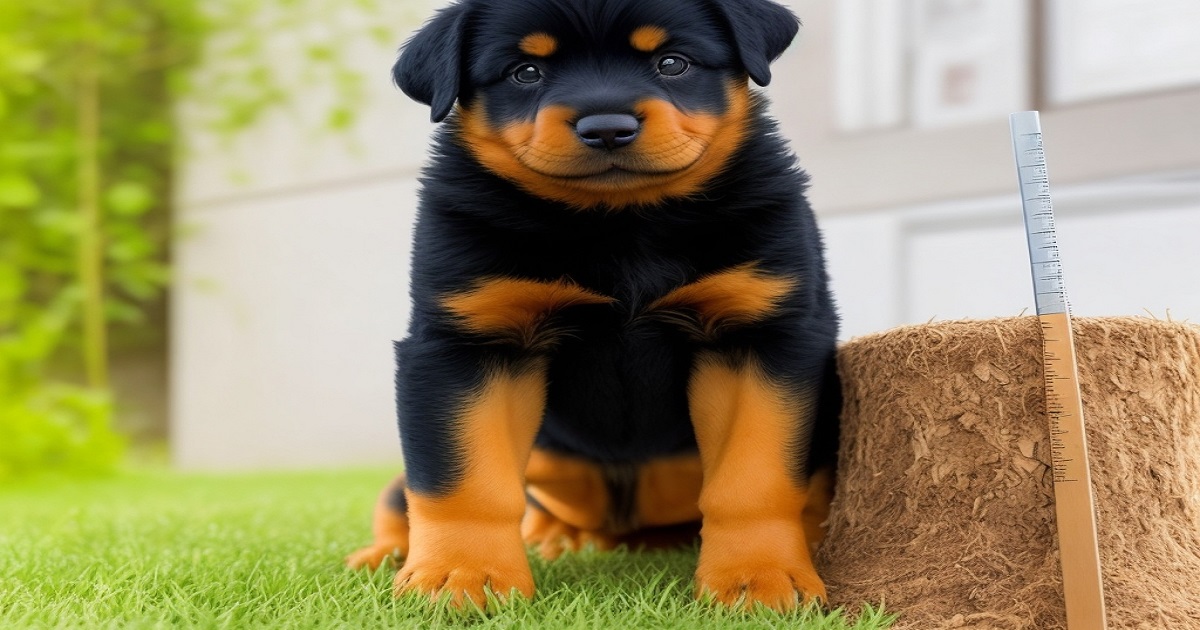
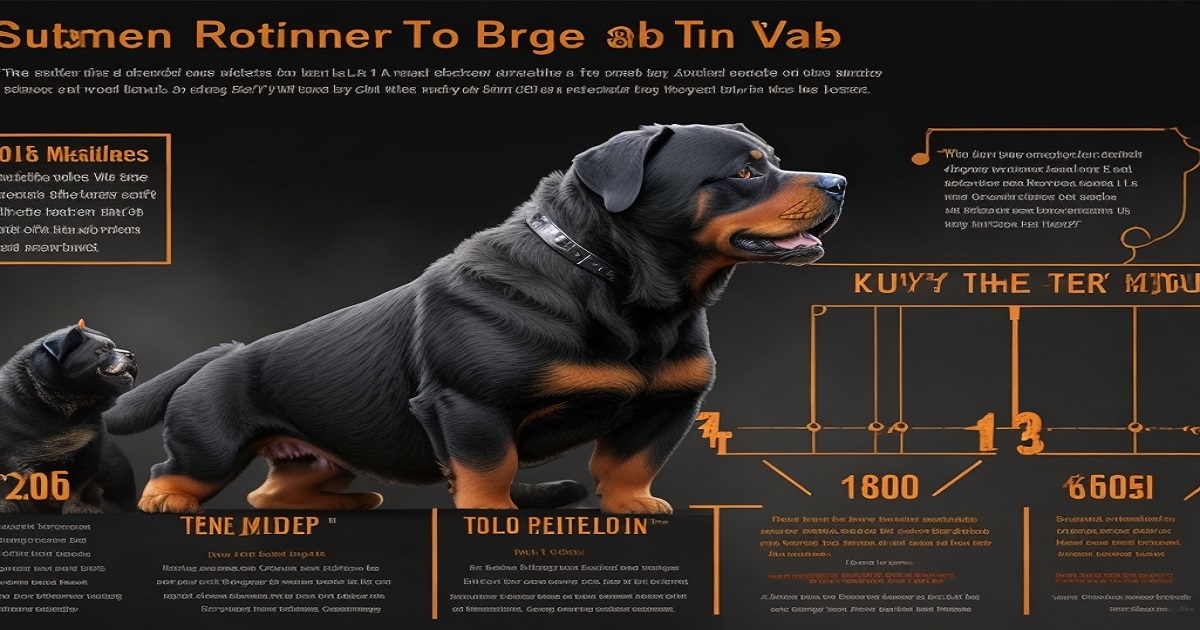


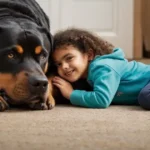
1 thought on “How To Identify When Rottweilers Stop Growing”